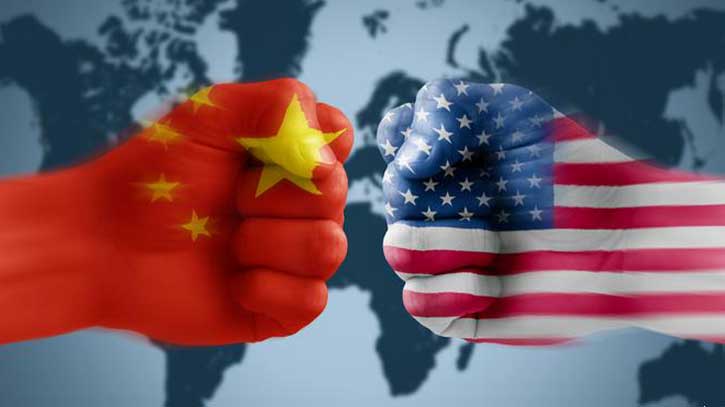
The US House Speaker Nancy Pelosi visited Taiwan on 2 August 2022. Her visit was followed by a visit by a five-member US Congressional delegation on 15 August, visit by Japanese lawmakers on 22 August, Lithuania appointing first-ever trade representative to Taiwan on 18 August and visit by US Senator Marsha Blackburn on 26 August with support to "push forward [Taiwan] as an independent state".
On 28 August two US Navy Cruisers from the 7th Fleet, stationed in Japan, transited the Taiwan Strait reaffirming US commitment for "a free and open Indo-Pacific". John Kirby, US National Security Council Coordinator described the transit very consistent with the US' one China policy. All happened in a row in August and only added to China's anger.
In the history of military conflict, "political provocation" has been a prelude to a pull or push of a country into war. For example, the ongoing Russia-Ukraine war has been the result of a provocative offer of NATO membership to Ukraine, which pulled Russia into war. According to Sun Tzu, provoke your enemy "to find out the pattern of his movements; make him show himself to discover the viability of his battle position; skirmish with him to find out where he is strong and where he is vulnerable" (The Book of War, The Modern Library New York, 2000).
China held its largest ever military drills in the Taiwan Strait from 4 to 8 August 2022 as retaliatory action to Nancy Pelosi's visit to Taiwan. Military drills had concentration of naval and air components over seven designated exclusion zones around Taiwan covering more than 26,000 square kilometres.
Military exercises were eventful with the participation of two aircraft carriers, at least one nuclear submarine, dozens of warships and fighter planes, bombers, refuellers, eleven ballistic missiles hitting waters close to the shores of Taiwan, defiance of the informal median line devised by USA in 1954 at the height of Cold War to separate Taiwan from the main land, encirclement of the island and diversion of ships and aircraft approaching or leaving Taiwanese sea and air ports and so forth.
China, unlike its response during the Third Taiwan Strait crisis in 1996, did not hesitate to exhibit its political resolve, amassing military power and encircling Taiwan, going close to its coasts. After the encirclement exercise of the island, China extended its military drills into the Bohai Sea, Yellow Sea and South China Sea till middle of August 2022.
While Chinese forces were exercising around Taiwan, USS Ronald Regan carrier strike group, the US' nuclear-powered supercarrier of the United States Navy, conducted exercises in the Philippine Sea. US maritime patrol aircraft P8 Poseidon was on patrol east of Taiwan to monitor China's PLA (The People's Liberation Army) exercises. The US test-fired a nuclear ballistic missile after Chinese drills were over in the Taiwan Strait. The USA expressed its resolve to fly, sail and operate anywhere international law allows. Possibilities of any de-escalation of tension between the two superpowers seem thin.
The developing situation has exposed two streams of tactical strategy that the contending powers will pursue. The US keeps reaffirming its commitment toward a "free and open Indo-Pacific" through warships manoeuvring in the Taiwan Strait and the South China sea. China keeps maintaining the pressure through continuous military presence in the waters around Taiwan and the region.
In the event of a war, naval and air warfare will dominate the battlespace. China has the largest navy in the world. But numbers alone may not be all that beneficial in waging battles, although China does have the advantage of operating from home bases, just 180 kilometres from Taiwan.
On the other hand, the USA will have to operate away from home base, which they have been doing since the Second World War. The USA has the largest economy in the world, the largest military, an aircraft carrier and nuclear submarine centric naval superiority, militarily and economically strong allies in the region and in Europe, and it is the most influential country in the world. To offset the capability gap, China has accelerated pace to build more warships to join the fleet by 2030 and catch up on the technological and economic fronts.
Chinese generals and admirals, who are regarded as the pupils of Sun Tzu, must have learnt from his philosophical teaching, "when to fight and when not to fight". Dr Mahathir Mohammad succinctly described China's position on Taiwan: "China has allowed Taiwan to remain by itself. No problem. They didn't invade. If they wanted to invade, they could have invaded. They didn't." However, at this stage, Taiwan is unlikely to walk the path of independence, China is unlikely to attack and the USA is likely to continue its strategic ambiguity, albeit a more complex one.
If China eventually attacks Taiwan, it will seek quick victory for a couple of reasons, especially before it is choked with energy supply disruption through the sea lines of communication. If China attacks, will the US involve itself directly in defence of Taiwan?
In the present context, the US does not have a defence pact with Taiwan and they do not have formal diplomatic ties. But, the China-Taiwan war will have the risk of turning the 'Battle Ground Taiwan' into a frontline between China and the USA. It is impossible to predict the magnitude of catastrophic consequences of a war between the two nuclear-armed superpowers. However, it is predictable that the China-US rivalry will define geopolitics in our time.
MS








